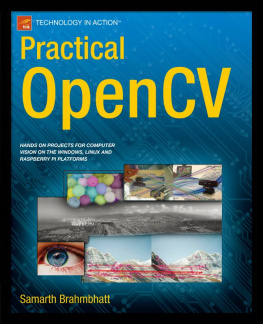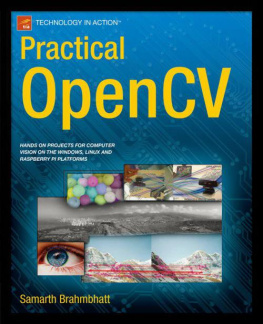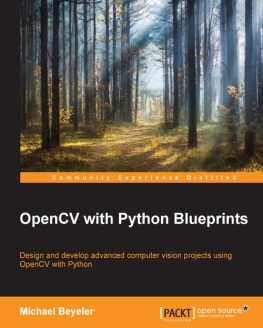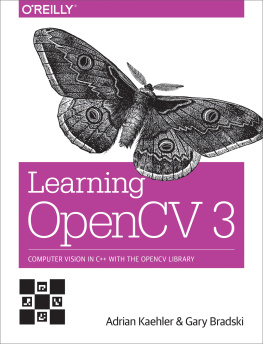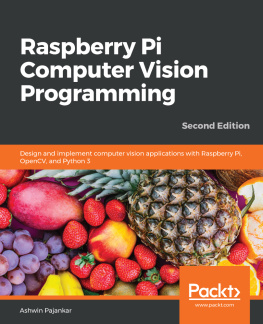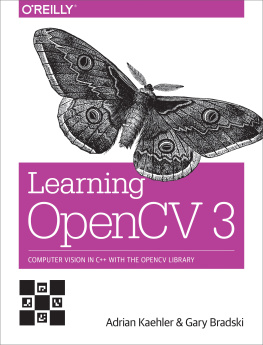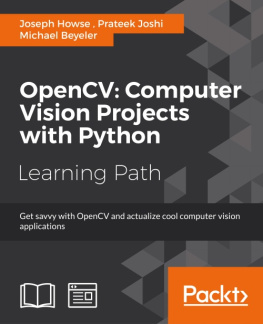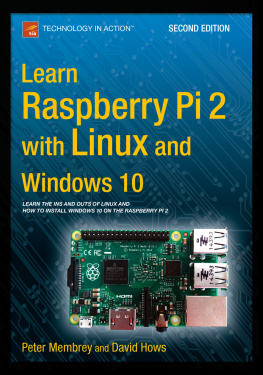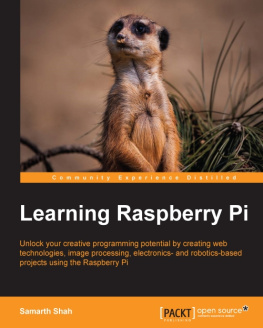Samarth Brahmbhatt - Practical OpenCV hands on projects for computer vision on the Windows, Linux and Raspberry Pi platforms
Here you can read online Samarth Brahmbhatt - Practical OpenCV hands on projects for computer vision on the Windows, Linux and Raspberry Pi platforms full text of the book (entire story) in english for free. Download pdf and epub, get meaning, cover and reviews about this ebook. year: 2013, publisher: Apress, Berkeley, CA, genre: Computer. Description of the work, (preface) as well as reviews are available. Best literature library LitArk.com created for fans of good reading and offers a wide selection of genres:
Romance novel
Science fiction
Adventure
Detective
Science
History
Home and family
Prose
Art
Politics
Computer
Non-fiction
Religion
Business
Children
Humor
Choose a favorite category and find really read worthwhile books. Enjoy immersion in the world of imagination, feel the emotions of the characters or learn something new for yourself, make an fascinating discovery.
- Book:Practical OpenCV hands on projects for computer vision on the Windows, Linux and Raspberry Pi platforms
- Author:
- Publisher:Apress, Berkeley, CA
- Genre:
- Year:2013
- Rating:3 / 5
- Favourites:Add to favourites
- Your mark:
- 60
- 1
- 2
- 3
- 4
- 5
Practical OpenCV hands on projects for computer vision on the Windows, Linux and Raspberry Pi platforms: summary, description and annotation
We offer to read an annotation, description, summary or preface (depends on what the author of the book "Practical OpenCV hands on projects for computer vision on the Windows, Linux and Raspberry Pi platforms" wrote himself). If you haven't found the necessary information about the book — write in the comments, we will try to find it.
Practical OpenCV hands on projects for computer vision on the Windows, Linux and Raspberry Pi platforms — read online for free the complete book (whole text) full work
Below is the text of the book, divided by pages. System saving the place of the last page read, allows you to conveniently read the book "Practical OpenCV hands on projects for computer vision on the Windows, Linux and Raspberry Pi platforms" online for free, without having to search again every time where you left off. Put a bookmark, and you can go to the page where you finished reading at any time.
Font size:
Interval:
Bookmark:
Getting Comfortable
- Advance vision research by providing not only open but also optimized code for basic vision infrastructure. (No more reinventing the wheel!)
- Disseminate vision knowledge by providing a common infrastructure that developers could build on, so that code would be more readily readable and transferable.
- Advance vision-based commercial applications by making portable, performance-optimized code available for freewith a license that did not require the applications to be open or free themselves.
Module | Functionality |
|---|---|
Core | Core data structures, data types, and memory management |
Imgproc | Image filtering, geometric image transformations, structure, and shape analysis |
Highgui | GUI, reading and writing images and video |
Video | Motion analysis and object tracking in video |
Calib3d | Camera calibration and 3D reconstruction from multiple views |
Features2d | Feature extraction, description, and matching |
Objdetect | Object detection using cascade and histogram-of-gradient classifiers |
ML |
Font size:
Interval:
Bookmark:
Similar books «Practical OpenCV hands on projects for computer vision on the Windows, Linux and Raspberry Pi platforms»
Look at similar books to Practical OpenCV hands on projects for computer vision on the Windows, Linux and Raspberry Pi platforms. We have selected literature similar in name and meaning in the hope of providing readers with more options to find new, interesting, not yet read works.
Discussion, reviews of the book Practical OpenCV hands on projects for computer vision on the Windows, Linux and Raspberry Pi platforms and just readers' own opinions. Leave your comments, write what you think about the work, its meaning or the main characters. Specify what exactly you liked and what you didn't like, and why you think so.

